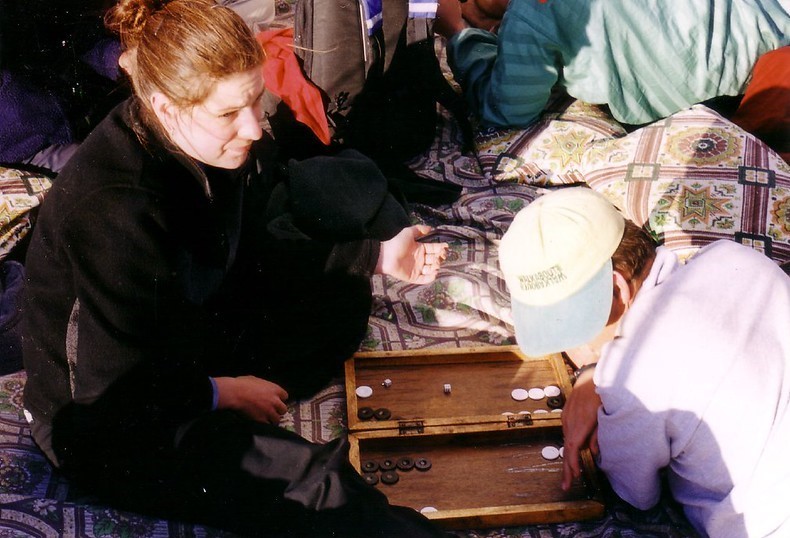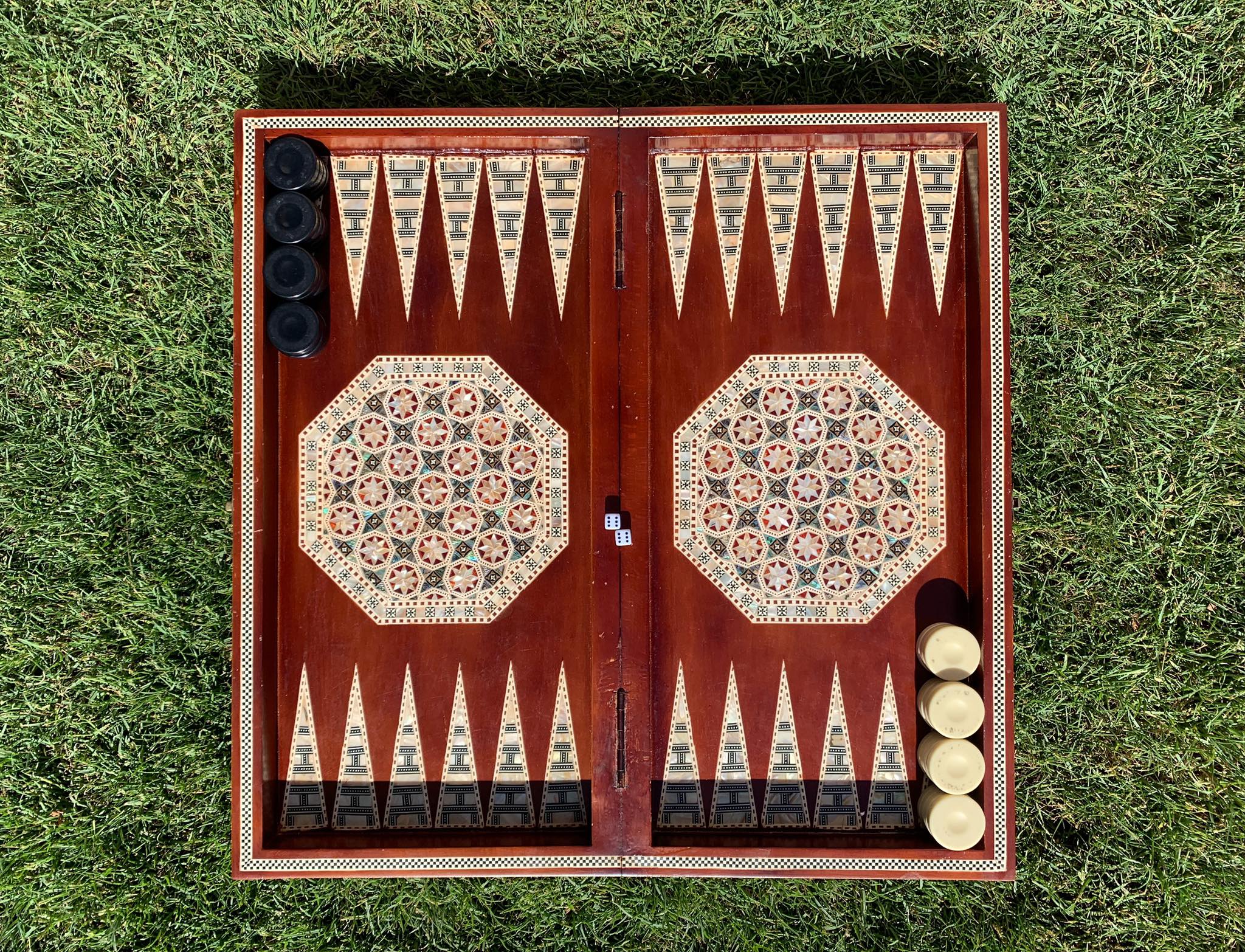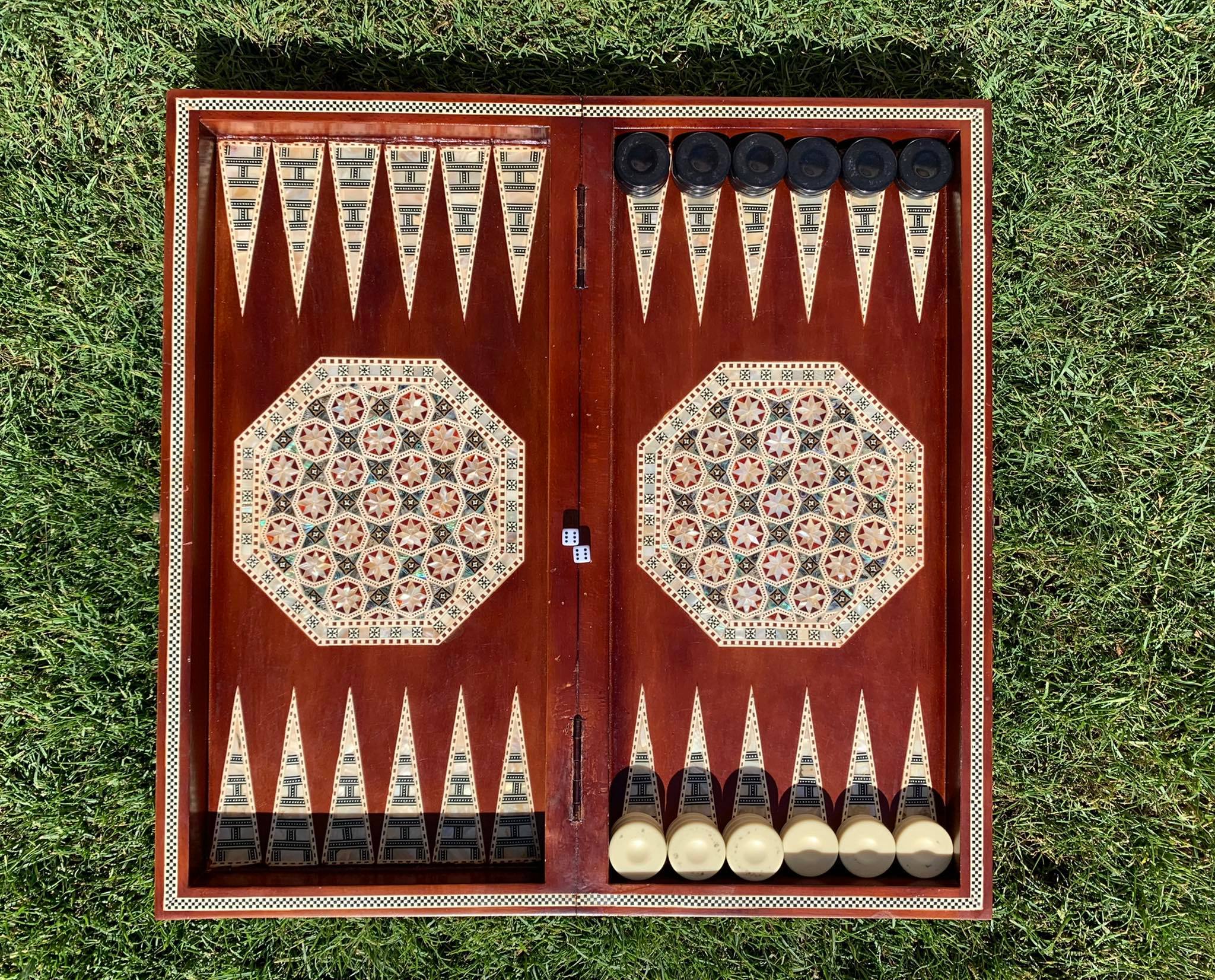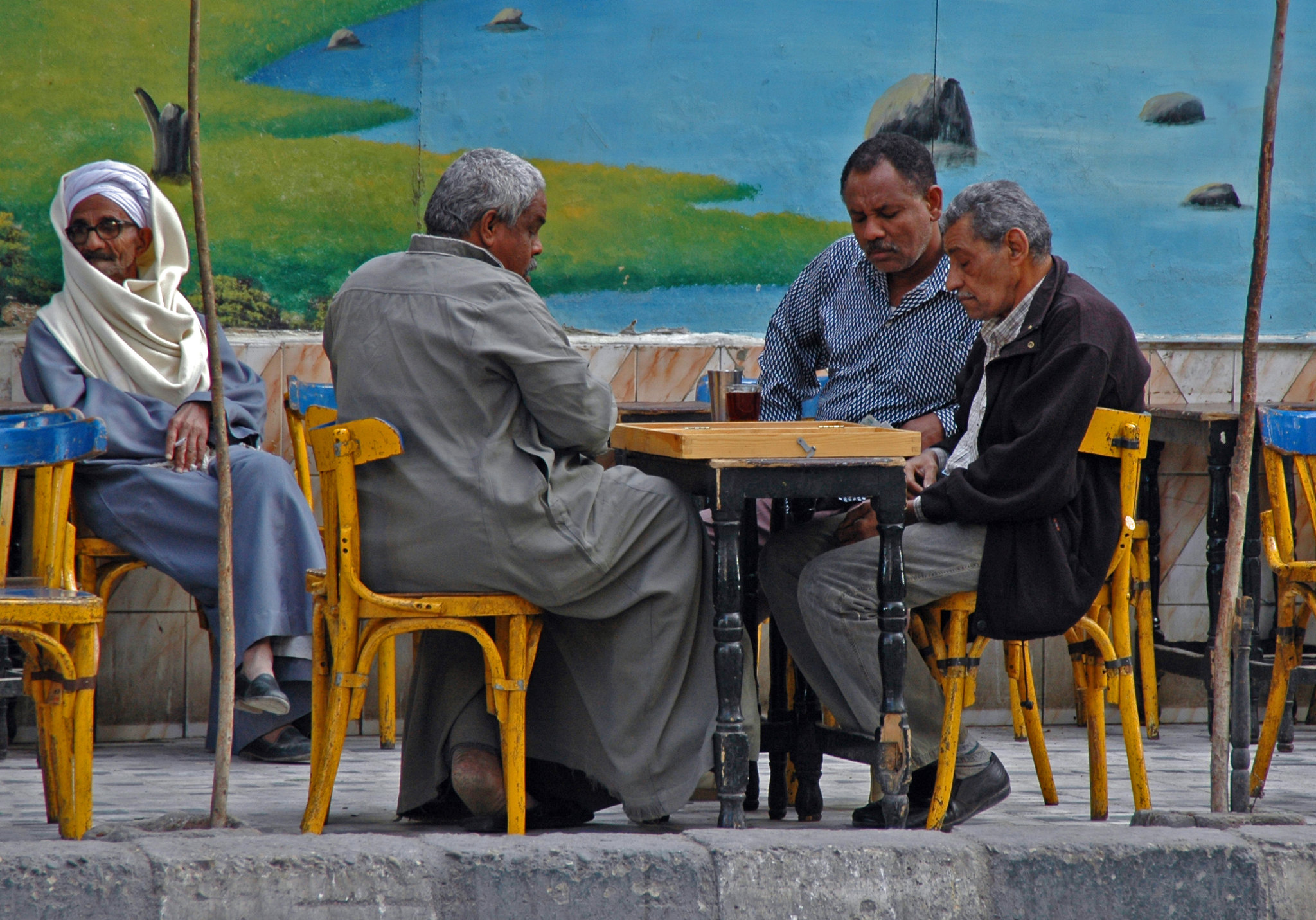Along with the bubbling sound of shisha and the chink of cups on saucers, the clicking of small dice falling onto a wooden board is one of the most typical ambient sounds of an Egyptian ahwa.
Backgammon, known in Egypt as tawla, is one of the most popular games in the country. The word tawla itself literally translates to ‘table’ in Arabic and originates from the Latin tabula – an irony, considering that the game itself is believed to be Persian in origin. However, the name used today, as well as the way in which the game is currently played, most likely came to Egypt from Turkish tradition.
Tawla is one of the most popular games in the country, and while it is usually associated with men sitting at a rickety table in an ahwa, it is also often played by families on leisurely summer holidays and in the morning on weekends.
But how is tawla actually played? The truth is, there is more than one way, some simple, others more complicated. Here are the rules to the five most commonly played games in Egypt.
The Basics
Tawla in all its varieties is a two-player game with a player seated at each side of the board. Each player has 15 pieces or checkers – oshat in Arabic – one set in white or ivory, the other in black or brown. The board itself is divided into four quadrants, each with six triangles or spaces, referred to as points – khana in Arabic. All the games below are played with two dice, which determine the number of spaces the checkers move on each player’s turn.

In Egypt, tawla comes with a specific terminology, and most of it originates from Farsi despite coming byway of Turkey. You will often hear backgammon players saying the numbers their dice fall on aloud, using the words yak, do, se, gahar, bang or beesh, and sheesh, to refer to the numbers one through six.
Rolling two of the same number gets its own set of words: hab yak, dobara, do se, dorgy, dabash, and dosh. This is of particular significance, as rolling two of the same number means the player will move their pieces four times the number on each die.
The rest is specific to each separate game.
‘Aada (Regular)
‘Aada is the most widespread game of tawla around the world, and its set of rules is what you are most likely to find in a search for how to play backgammon. In it, the checkers start out in the arrangement shown in the image below with the white player sitting on the near side of the board and black on the far side.

Based on the numbers they roll, the players move their checkers towards their home quadrant, which is the quadrant on the bottom right of the board according to the image for white, and the the top right according to the image for black. Black moves clockwise and white moves anticlockwise. The objective is for each player to get all of their pieces off of the board – an action referred to as bearing off in English and akl (to eat) in Egyptian Arabic – while also slowing down their opponent in achieving the same.
In this game, a player cannot land on a point on which their opponent has more than one checker already stacked. However, landing on a point where your opponent has only a single exposed checker forces the opponent to return that checker to the furthest point from their home quadrant.
Once a player manages to land all of their pieces in their home quadrant, based on the numbers they roll, they can begin to bear off their checkers. The player who bears off all their checkers first, wins the match with one point, and if they bear off all of their checkers before the other even begins bearing off, they earn two points. Winning a set is achieved by receiving three points.
Mahbousa (Trapped)
In this game, the objective is once again for each player to move their pieces to their home quadrant and start bearing them off. The pieces, however, are initially stacked as is shown in the image below, on the furthest point from each player’s home quadrant.

Like in ‘Aada, players try to slow each other down in their pursuit, and the way to do this in Mahbousa is what gives the game its name. If any checker is alone and exposed on a point, the opposing player will try to lock it in by placing a checker of their own in front of it on the point. The more opposing checkers are stacked over the trapped piece, the harder it becomes to release it.
Once again, a player can only start bearing off when all of their pieces are in their home quadrant. The most critical game-winning strategy is to trap one or more of your opponent’s checkers in their starting quadrant – also your home quadrant – allowing you to start bearing off, while your opponent has to wait until their pieces are freed.
The points awarded for each match and the criteria for winning a set are the same as in ‘Aada.
31
In 31, the board is laid out the same way as in Mahbousa, and much like it, the objective of the game is for each player to move their checkers from the starting point to their home quadrant on the furthest side of the board, at which point they can begin to bear off.
Unlike the first two games described, once a checker is on a point, the opponent cannot land on that point, force it to the starting quadrant, or lock it in; only checkers of the same colour can be on a single point together.
The winner is the player who bears off all their checkers first, gaining as many points as the opponent has checkers remaining on the board. Unlike the two other games, the set ends when one player reaches 31 points.
Gulbehar
Unlike in any of the other games, the player’s starting quadrants, and subsequently their home quadrants, in Gulbehar are diagonal from each other, as can be seen in the starting shape shown below.

Apart from this board layout, the differences between Gulbehar and 31 are minor: the objective is also to move the checkers around to the home quadrant and start bearing off, and a player can once again not land on a point their opponent has pieces on, nor can they trap or force their opponent to start over.
Another key difference is that rolling two of the same number obligates the player to keep playing four times the number on each die and the same for all the remaining higher numbers until six. For example, if a player rolls two threes, they move their checkers by three points four times, then by four points four times, then by five points four times, then by six points four times. If it happens at any point in this sequence that player has no open points for a certain move, their opponent takes over and finishes the sequence until four sixes are played.
The winner in Gulbehar is the player who bears off all their checkers before their opponent. The points for each match are the same as Mahbousa and ‘Aada, and the player who scores three points first wins the set.
Al-Yahudiyya (Jewish)
To many, this variety is too simple to be considered real tawla. It is, however, a popular way to show children the ropes, familiarizing them with the basics to prepare them for more complicated games.
Only one half of the board is in use in this game. The points on each quadrant are numbered one through six. As can be seen in the image below, two checkers are stacked on top of each other on the first three points, and three checkers are stacked on top of each other on points four, five, and six.

Depending on the number rolled on the dice, each player lays down a checker from the corresponding point, so that the checkers lie flat on the point rather than being stacked on top of each other. For example, if a player rolls a two and a six, they lower a checker on the second point and the sixth point flat onto the point. If the player rolls a number where the all checkers are already all laid out flat on the point, they do not move any checkers.
Once a player’s checkers are all in a flat layer, they can begin bearing off based on the numbers they roll. For example, if they roll a one and a five, they bear off one checker from the first point and a checker from the fifth. The player who bears off all of their checkers first, wins.
Subscribe to the Egyptian Streets’ weekly newsletter! Catch up on the latest news, arts & culture headlines, exclusive features and more stories that matter, delivered straight to your inbox by clicking here.






Comment (1)
[…] alternative ways to enjoy entertainment at home. From bank el haz (Egyptian monopoly) to classic tawla (backgammon), games, especially with a large group of friends or cousins, are always fun. So for […]